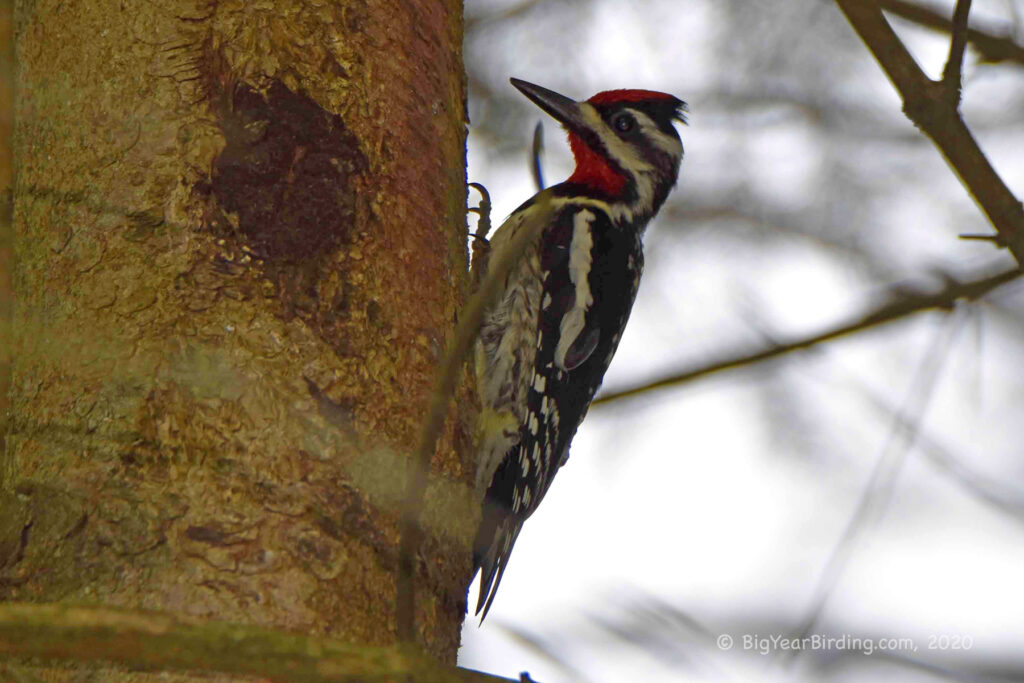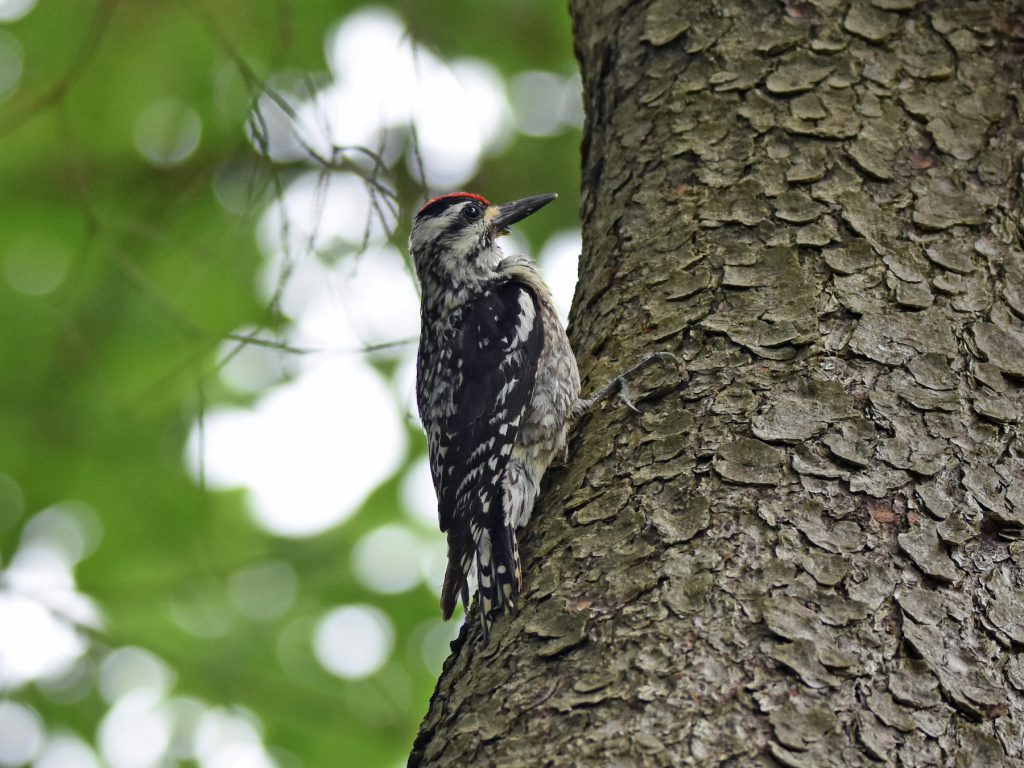
The Yellow-bellied Sapsucker (Sphyrapicus varius) is a species of woodpecker that is native to North America. They are known for their distinctive red head, white stripes on the neck and wings, and yellow underbelly. The birds are migratory and are often seen in wooded areas and forests, especially during the breeding season.

The yellow-bellied sapsucker is a unique bird because of its feeding habits. The bird feeds on sap from trees and makes rows of small holes in the bark to access the sap. The sap is a sweet, sugary liquid that is produced by the tree to heal the wounds created by the bird. These holes are also used as a source of food for other species, including hummingbirds, insects, and butterflies. This makes the yellow-bellied sapsucker an important species in maintaining the balance of the ecosystem.
Breeding season for the yellow-bellied sapsucker starts in the spring, and the birds will often return to the same breeding site year after year. During this time, they are very territorial and will defend their nests aggressively. The nests are typically built in cavities in trees and are lined with soft material such as feathers, moss, and grass. The female will lay between two and six eggs, which she will incubate for about two weeks. Once the eggs hatch, both parents will care for the young, feeding them regurgitated sap and insects.
The yellow-bellied sapsucker is a protected species in many areas and is listed as a species of concern by the Committee on the Status of Endangered Wildlife in Canada. The bird is vulnerable to habitat loss, as well as changes in the quality and availability of their food sources. Conservation efforts are being made to protect the bird and its habitat, including reforestation projects, habitat restoration, and monitoring of population numbers.

In conclusion, the yellow-bellied sapsucker is a unique and important bird that plays a crucial role in the ecosystem. With its distinctive appearance and feeding habits, it is a bird that is both interesting and important to protect. Through conservation efforts and protection of its habitat, we can ensure that this species continues to thrive for generations to come.
